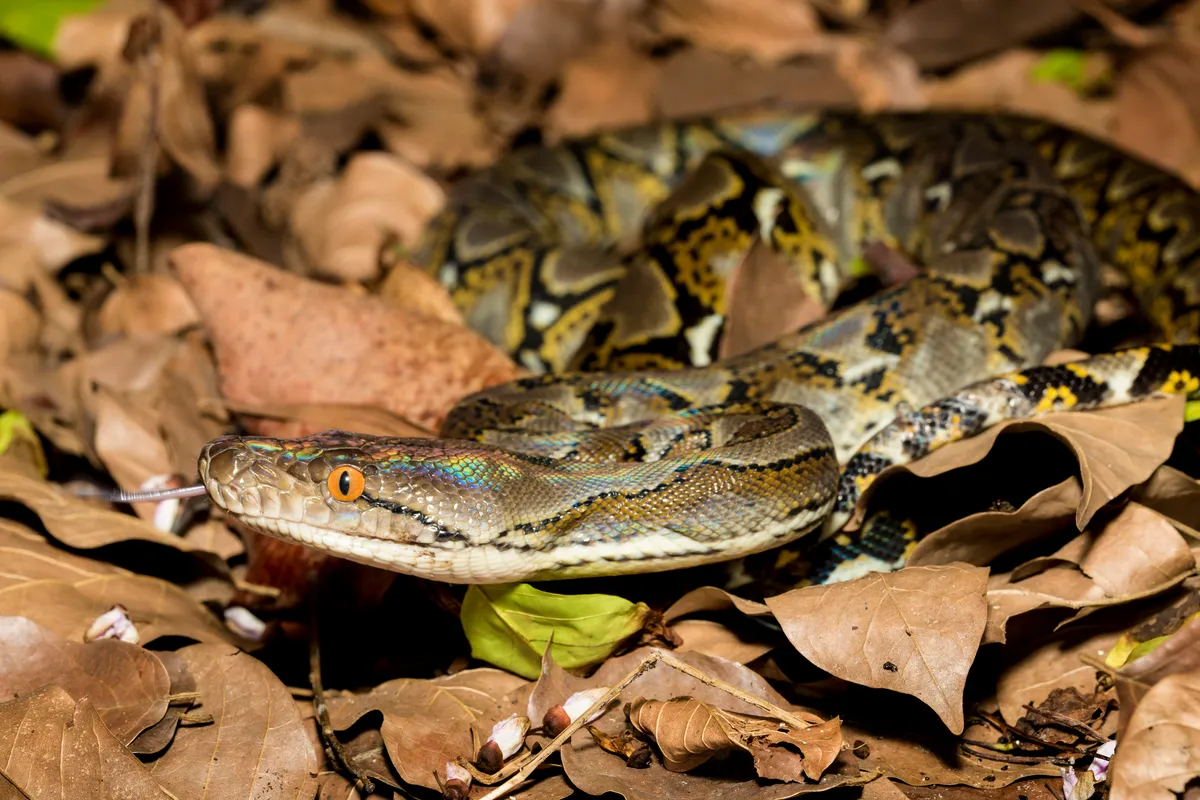The idea of virgin births in animals such as sharks, reptiles, birds and especially mammals was considered to be largely the stuff of sci-fi or, well, religion, until the early 2000s.
Then in 2002, a bonnethead shark pup suddenly appeared in a tank containing three female bonnetheads, a male leopard shark and a stingray in a zoo in Nebraska. Scientists concluded the pup was the product of parthenogenesis, a process where females create embryos from unfertilised eggs. Since then, science has shown that other sharks, lizards, snakes, birds such as condors and even mice (well, sort of) are also capable of reproducing asexually. But not, so far, humans.
!0 animals that can have virgin births
Komodo dragons

That Komodo dragons (the world’s largest lizard) could reproduce without the input of any male chromosomes had not been suspected until captive females at both Chester and London zoos were born in the mid-2000s. Parthenogenesis, explained an article in the journal Nature, has potential advantages for this species which is native to an archipelago of mostly small islands in the south of Indonesia – it could be the only way for a female that ends up isolated on an island with no males to reproduce.
Reticulated pythons

As well as the world’s biggest lizard, the world’s longest snake is another reptile capable of asexual reproduction. As with many of the known examples of virgin births, this also took place in captivity (in Kentucky, this time), and it involved a 6-metre female called Thelma who laid 61 eggs, six of which hatched.
Zebra sharks

It’s assumed that females usually turn to asexual reproduction when there are no males around, but at Chicago’s Shedd Aquarium, scientists were stunned to learn in 2022 that a female zebra shark had given birth to parthenotes (as such offspring are termed) while sharing a tank with healthy males. It’s only the second time it’s been recorded in sharks, and it suggests we don’t fully understand why parthenogenesis happens.
New Mexico whiptail lizards

While for most species, asexual reproduction may be a means to an end of last resort, for New Mexico whiptail lizards Aspidoscelis neomexicana, it is the only means. Scientists believe the entire, female-only species is the result of hybridisation between two other whiptail lizards, and it has now settled on parthenogenesis as the most efficient way to reproduce effectively.
Copperhead and cottonmouth snakes

Whiptail lizards utilise parthenogenesis in the absence of males, but copperheads and cottonmouths – closely related members of the Viper family – have been shown to reproduce asexually in the wild even where there are males present. Pregnant individuals of both species were caught and subsequently gave birth in a lab, and when there were a higher than expected number of stillborn babies (vipers give birth to live young), the researchers immediately suspected it was because they’d been conceived through parthenogenesis.
Stick insects

Some species only reproduce asexually in extremis, others do it all the time – and then there are some, such as stick insects in the Timema genus, which just occasionally mate to mix up the gene pool. Scientists knew these stick insects were mainly composed of females, but that there were also small numbers of males. Parthenogenesis leads to faster population growth, but a little bit of sex now and again helps keep the population healthy.
California condors

Scientists at San Diego Zoo discovered female California condors had quietly produced chicks on the sly without any male intervention when they were combing through the genetics of some 900 birds they’d bred since the 1980s.
Two males – which had both died without themselves fathering any offspring – not only didn’t have any genetic material from their mothers’ long-term mates, they didn’t have any DNA from any males on their database at all. The only possibility was they were the result of asexual reproduction.
Mole salamanders

Parthenogenesis can seem like a freaky subject but it gets freakier still when you consider the mole salamander, a genus of amphibians only found in North America and which include the famously freaky axolotl, the Peter Pan salamander that never grows up.
There are some species that live in the Great Lakes region that only produce offspring that are clones of their mother, but still require some sperm to kick-start the process, like using yeast to trigger the chemical reaction that turns sugar into alcohol. They get that sperm from a closely-related species, which triggers the egg cells into dividing. Sometimes, they may even steal a part of the sperm’s DNA, a process termed kleptogenesis!
Mice
Parthogenesis in mammals had been thought to be impossible until it was reported that scientists from the Shanghai Jiao Tong University School of Medicine in China had tricked some mouse eggs into thinking they had been fertilised by a male, and with some other nifty techno switches, the embryos developed and grew. In the study, three mice were born live from 192 embryos but only one survived to adulthood. “There are people who will look at this and say, ‘Oh, is this going to replace reproduction? Get rid of men?’ No, it’s not,” said Marisa Bartolomei of the University of Pennsylvania who was not involved in the research. Well, phew.
Round stingrays

Charlotte the round stingray became an internet sensation in 2024 when she appeared to be pregnant as a result of pathenogenesis. Owners of the Aquarium & Shark Lab in North Carolina sent the scientific world into a spin when they claimed Charlotte was due to give birth even though she had not been with a male stingray in four years. There was intense scrutiny, but the pregnancy failed to turn into baby stingrays, and Charlotte died later in the year from a reproductive disorder.
